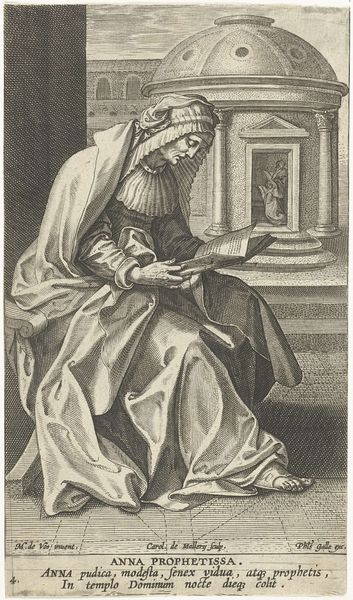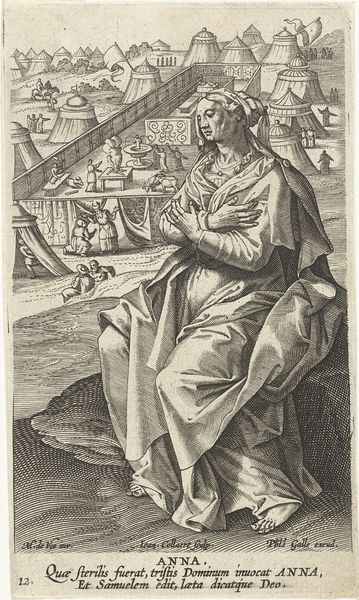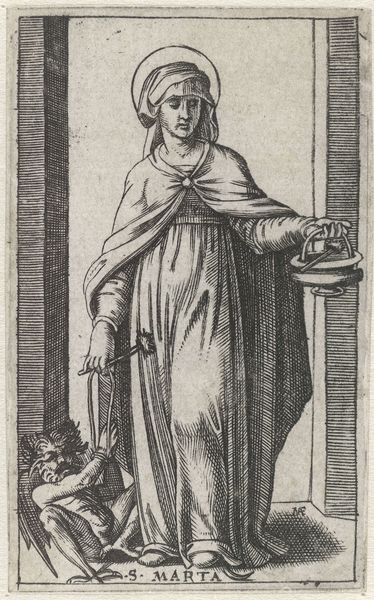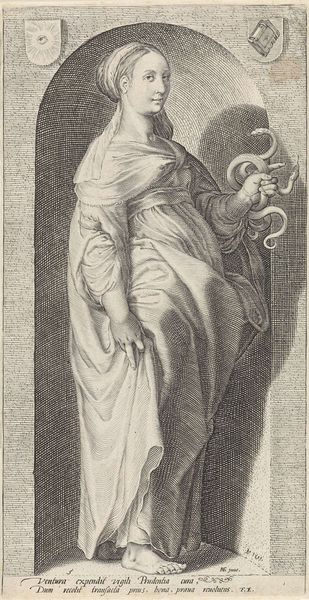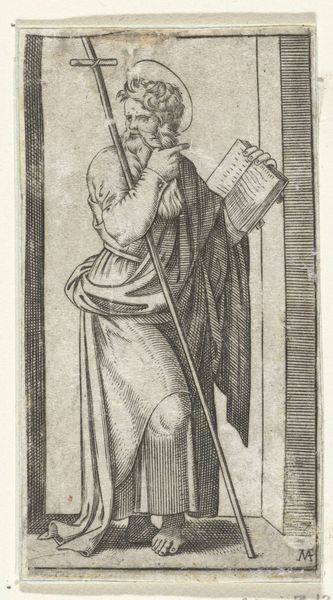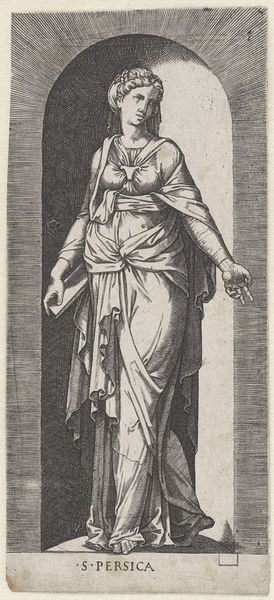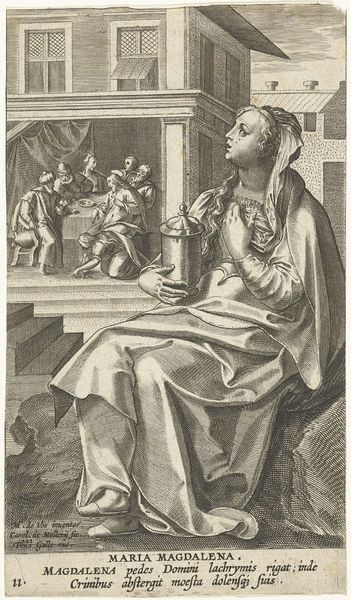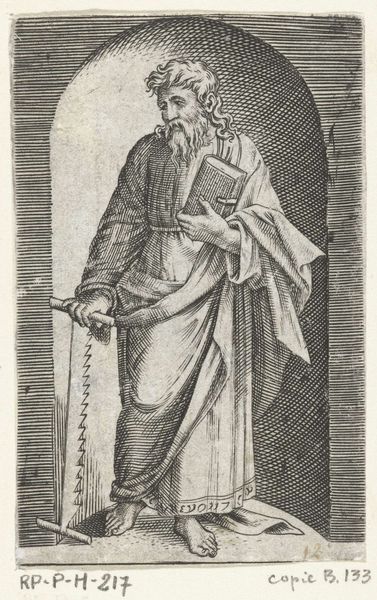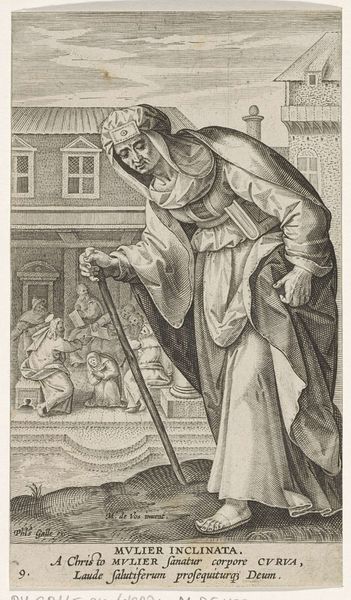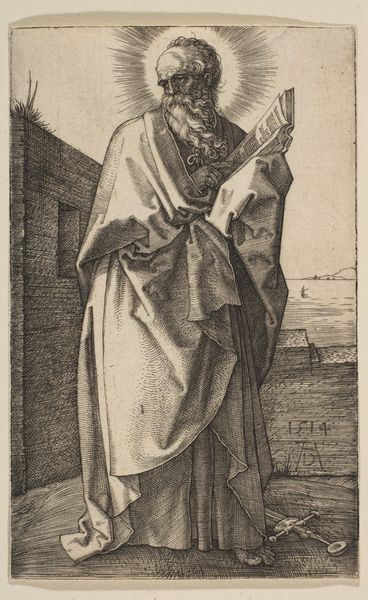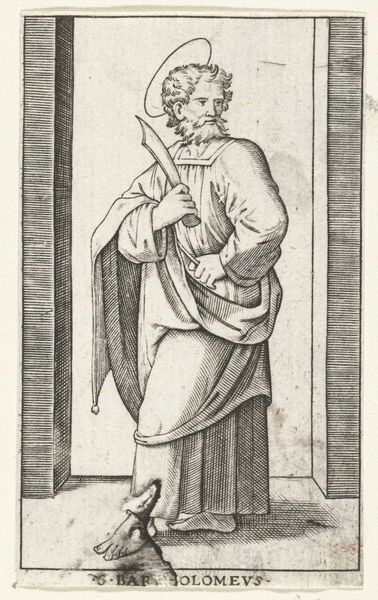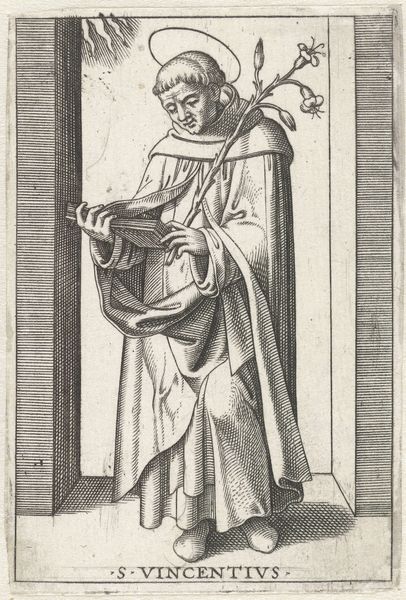
print, engraving
#
portrait
#
baroque
# print
#
figuration
#
history-painting
#
engraving
Dimensions: height 153 mm, width 85 mm
Copyright: Rijks Museum: Open Domain
Editor: This is Jan Collaert the Second's "Heilige Elisabet," created sometime between 1595 and 1599. It's an engraving, a print, so we’re seeing lines making up the whole image. I'm really struck by the detail in the clothing, but I'm not sure how to interpret the broader scene. What do you see in this piece? Curator: What interests me is precisely the production of that detail through the laborious process of engraving. Each line represents time, labor, a deliberate act of mark-making within a specific economic and social context. Consider the network involved: the artist, Collaert; the designer, M. de Vos, credited in the corner; and the publisher, Phils Galle. These individuals represent distinct roles within a complex system of production and consumption of religious imagery. What do you think was the target audience for an artwork of this kind? Editor: I hadn’t thought about it that way. Given that it is a print, maybe it’s more widely accessible than, say, a painting, and it was consumed as a devotional object by those who weren't nobility? Does that mean it challenged the boundaries between high art and what we might think of as a commodity? Curator: Exactly! This work exists within a broader economy of images. The materiality of the engraving—the paper, the ink, the very act of its creation—positions it as both a religious object and a commodity. Its value isn’t solely aesthetic; it is tied to its production, distribution, and intended use, like many commodities still are today. Also consider how that act of replicating an image challenges notions of originality, since prints allow for identical, multiple iterations. Editor: That's fascinating! I never considered how the act of printing and distributing could change how people interacted with religious figures, making them more commonplace objects in a way. Thanks, that gave me so much to think about. Curator: Indeed. Considering the materiality of art opens a wider investigation of its purpose and how it represents the social context it emerged from.
Comments
No comments
Be the first to comment and join the conversation on the ultimate creative platform.

